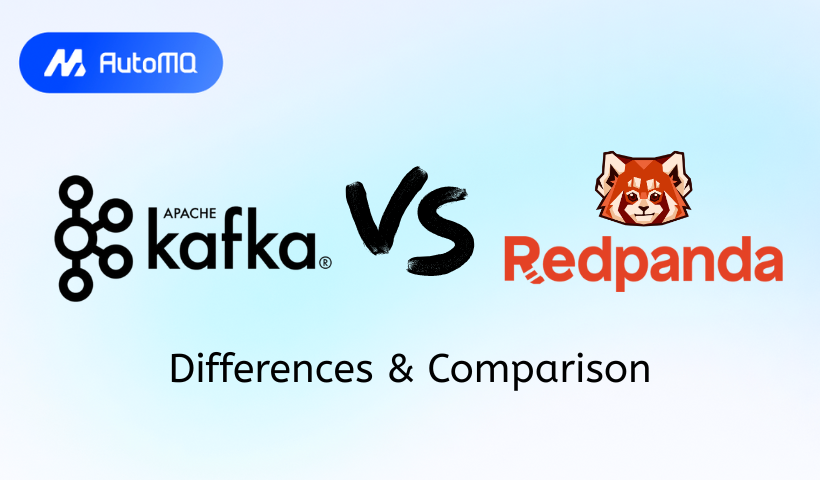Introduction
The world of data is increasingly real-time. Businesses need to react to events as they happen, leading to the rise of event streaming platforms. At the forefront of this revolution are technologies that can ingest, store, and process massive streams of data. Apache Kafka has long been a dominant force in this space. However, newer alternatives like Redpanda have emerged, promising enhanced performance and operational simplicity. As a senior software engineer, I've seen the landscape evolve, and in this post, I'll offer a comprehensive comparison to help you understand the nuances of Redpanda and Apache Kafka.
What is Event Streaming?
Before we dive into the specifics, let's briefly touch upon event streaming. At its core, event streaming is the practice of capturing data in the form of "events"—immutable facts about something that happened—in real-time from event sources like databases, sensors, mobile devices, and applications. These events are then stored durably for later retrieval, processed, and reacted to, often by multiple applications. This paradigm is crucial for use cases like real-time analytics, microservices communication, fraud detection, and IoT data processing.
Apache Kafka: The Established Titan
Apache Kafka is an open-source distributed event streaming platform renowned for its high throughput, scalability, and fault tolerance [1]. Originally developed at LinkedIn, it quickly became the de facto standard for many organizations building event-driven architectures.
Core Concepts and Architecture
Kafka's architecture consists of several key components:
Brokers: Servers that form a Kafka cluster. Each broker stores data and serves client requests.
Topics: Categories or feeds to which records (events) are published. Topics are partitioned for parallelism and scalability.
Partitions: Topics are divided into partitions. Each partition is an ordered, immutable sequence of records, acting like a structured commit log. Partitions allow for data distribution and parallel processing.
Producers: Client applications that publish (write) records to Kafka topics.
Consumers: Client applications that subscribe to (read and process) records from Kafka topics. Consumers typically operate in consumer groups to distribute the workload.
Log-Structured Storage: Kafka stores records in a durable way on disk, leveraging sequential I/O for high performance [2].
Replication: Partitions are replicated across multiple brokers for fault tolerance. One broker acts as the leader for a given partition, while others act as followers.
ZooKeeper / KRaft: Traditionally, Kafka relied on Apache ZooKeeper for metadata management, including broker coordination, controller election, and configuration storage [3]. More recently, Kafka has introduced KRaft (Kafka Raft Metadata mode), which allows Kafka to manage its metadata without ZooKeeper, simplifying deployment and improving scalability [4]. This is a significant architectural evolution, reducing operational complexity.
![Apache Kafka Architecture [17]](https://static-file-demo.automq.com/6809c9c3aaa66b13a5498262/68f5ebc2f4aa6742a902e26a_67480fef30f9df5f84f31d36%252F685e62750df4a037e5bcd8c2_hRzi.png)
Kafka is primarily written in Scala and Java, running on the Java Virtual Machine (JVM). This brings the benefits of the mature JVM ecosystem but also necessitates JVM tuning and management.
Redpanda: The Challenger Engineered for Speed and Simplicity
Redpanda is a modern streaming data platform designed to be Kafka-compatible from the ground up [5]. Its primary goal is to offer significantly better performance and lower operational overhead compared to Kafka, while leveraging modern hardware capabilities.
Core Concepts and Architecture
Redpanda differentiates itself with several key architectural choices:
C++ Implementation: Redpanda is written in C++ using the Seastar framework [6]. Seastar is a library for building high-performance, asynchronous applications by leveraging a thread-per-core architecture. This design aims to maximize hardware utilization and minimize context switching, leading to lower latencies.
ZooKeeper-less Design: Redpanda does not require ZooKeeper. It uses the Raft consensus algorithm internally for metadata management, replication, and leader election. This simplifies deployment and operations, as there's no separate coordination service to manage.
Single Binary: Redpanda is distributed as a single binary, making installation and deployment straightforward [5]. It includes an embedded schema registry and other management tools.
Thread-per-Core Model: Each CPU core runs a dedicated Redpanda thread, pinning I/O and memory to that core. This avoids the overhead of traditional multi-threaded architectures, such as lock contention and context switching, contributing to its performance claims [6].
Kafka API Compatibility: Redpanda is designed to be a drop-in replacement for Kafka, supporting the Kafka wire protocol. This means existing Kafka producers, consumers, and tools can typically be used with Redpanda without code changes [7].
![Redpanda Architecture [18]](https://static-file-demo.automq.com/6809c9c3aaa66b13a5498262/69099d911e989f9f6c9f4fa0_67480fef30f9df5f84f31d36%252F685e6276574f5ffd375a51d7_SdWb.png)
API Compatibility: Seamless Transition?
Redpanda's claim of Kafka API compatibility is a major selling point. For many common use cases involving producing and consuming messages, existing Kafka client applications can indeed connect to a Redpanda cluster by simply changing the broker address [7]. This allows organizations to leverage the vast Kafka ecosystem of client libraries and tools.
However, while the core API is compatible, it's important to verify compatibility for more advanced Kafka features or specific ecosystem components. For instance, some sources note that Kafka Streams, a client library for building stream processing applications, may not be fully supported or might require specific considerations when used with Redpanda [8]. Always test your specific applications and tools thoroughly.
Performance: The Battle of Benchmarks
Performance is a key area where Redpanda aims to outshine Kafka. Redpanda claims significantly lower latencies (up to 10x faster P99.9 tail latencies), higher throughput, and better resource efficiency, often suggesting that fewer nodes are needed to achieve the same workload capacity as Kafka [9]. These improvements are attributed to its C++ implementation, thread-per-core architecture, and lean design.
Kafka, on the other hand, has a long history of powering some of the world's largest streaming workloads and has undergone continuous performance optimizations [1]. The introduction of KRaft also contributes to better performance and scalability, especially for clusters with a large number of partitions [4].
It's crucial to approach performance benchmarks with a critical eye. Performance can vary significantly based on workload characteristics (message size, batching, number of partitions, producer/consumer configuration), hardware, network conditions, and specific feature usage (e.g., transactions, TLS encryption). Some independent analyses and community discussions have highlighted scenarios where Kafka might perform comparably or even better, or where Redpanda's performance might show variability under certain conditions, such as when disk garbage collection occurs or with specific fsync behaviors. Always conduct your own benchmarks reflecting your specific production workloads before making a decision.
Key Feature Comparison
Let's compare some key features side-by-side:
| Feature | Apache Kafka | Redpanda |
|---|---|---|
| Core Engine | JVM-based (Scala/Java) [1] | C++ with Seastar framework [6] |
| Metadata Mgmt. | ZooKeeper or internal KRaft [3, 4] | Built-in Raft consensus |
| Deployment | Multiple components (brokers, ZooKeeper/KRaft controllers), more complex setup [3] | Single binary, simpler deployment [5] |
| Schema Registry | Typically a separate component (e.g., open-source implementations or vendor-provided) [10] | Embedded, Kafka API-compatible schema registry [5] |
| Tiered Storage | KIP-405 provides a framework for tiered storage in open-source Kafka; some vendor solutions exist [11]. | Built-in tiered storage for offloading data to object storage (S3, GCS, etc.) in its enterprise version [12]. |
| Security | Supports SASL, TLS/SSL for encryption in transit, ACLs. Disk encryption via OS/filesystem. | Supports SASL, TLS/SSL, ACLs. Similar approach to data-at-rest encryption [13]. |
| Transactions (EOS) | Robust support for Exactly-Once Semantics with idempotent producers and transactional APIs [14]. | Kafka API compatible, supports transactional messaging. |
| Management Tools | CLI tools (kafka-topics.sh, etc.), AdminClient API. Various third-party and ecosystem UIs available [15]. | rpk (Redpanda Keeper) CLI for comprehensive cluster management, Redpanda Console (web UI) [16]. |
Operational Aspects
Deployment and Configuration
Deploying Kafka traditionally involves setting up brokers and a separate ZooKeeper ensemble. While KRaft simplifies this by removing the ZooKeeper dependency, configuring and tuning a Kafka cluster for optimal performance can still be complex [3, 4]. Redpanda's single binary and ZooKeeper-less architecture generally lead to a simpler deployment and configuration experience [5].
Management and Monitoring
Kafka exposes metrics via JMX, which can be scraped by monitoring systems like Prometheus using exporters. Many organizations also use specialized monitoring and management tools built for Kafka [15]. Redpanda provides native Prometheus metrics endpoints and its rpk CLI and Redpanda Console offer comprehensive management and monitoring capabilities [16].
Scalability and Elasticity
Both Kafka and Redpanda are designed to be horizontally scalable. You can add more brokers to a cluster to increase capacity. Kafka's partition-based parallelism allows for scaling out both producers and consumers [1]. Rebalancing partitions in Kafka can sometimes be a resource-intensive operation. Redpanda also supports horizontal scaling and features like autotuning of partitions per core. Its Raft-based architecture aims for faster leadership changes and potentially smoother scaling operations.
Developer Experience
Kafka benefits from a vast and mature ecosystem, with client libraries in numerous programming languages and extensive documentation and community support [1]. The developer experience can sometimes be impacted by the operational complexity of managing a Kafka cluster.
Redpanda aims to improve the developer experience through its simpler architecture, faster local development setups (due to the single binary), and tools like rpk and Redpanda Console [5, 16]. The Kafka API compatibility means developers can leverage existing Kafka knowledge and tools.
Ecosystem and Community
Apache Kafka boasts a massive, mature ecosystem and a very large global community. This translates to a wealth of connectors (Kafka Connect), stream processing libraries (like Kafka Streams), third-party tools, documentation, and community support forums [1]. Finding experienced Kafka developers and operators is generally easier.
Redpanda, being newer, has a smaller but rapidly growing community and ecosystem [5]. Its Kafka API compatibility allows it to tap into parts of the Kafka ecosystem. Redpanda also offers Redpanda Connect (based on the formerly Benthos project) for powerful data integration and processing capabilities.
Total Cost of Ownership (TCO) and Licensing
Apache Kafka:
License: Apache License 2.0 (open source) [1].
TCO: While the software is free, TCO includes hardware costs, operational overhead (managing ZooKeeper/KRaft, JVM tuning, broker upkeep), and engineering time. Kafka can sometimes require more nodes for equivalent performance compared to Redpanda's claims, potentially impacting hardware costs.
Redpanda:
License: Redpanda has a Community Edition available under the Business Source License (BSL) 1.1. The BSL code eventually converts to Apache License 2.0 after a specified period (currently four years). The BSL has limitations, such as not allowing you to offer Redpanda as a commercial managed service. Redpanda Enterprise Edition is available under a commercial license and includes features like tiered storage [12].
TCO: Redpanda argues for a lower TCO due to better resource efficiency (requiring fewer nodes), simplified operations (no ZooKeeper, single binary), and reduced administrative burden. However, licensing costs for the Enterprise version need to be factored in if its features are required. As with performance, TCO comparisons are highly dependent on specific use cases and operational models.
Conclusion: Which Platform is Right for You?
Both Apache Kafka and Redpanda are powerful event streaming platforms, but they cater to slightly different priorities.
Choose Apache Kafka if:
You have existing deep investments and expertise in the Kafka ecosystem.
You require the absolute broadest range of third-party integrations and community support.
Your organization prefers mature, battle-tested solutions with a long track record, and the operational aspects of the JVM and Kafka's traditional architecture (or KRaft) are well understood and managed.
You are committed to a fully Apache 2.0 licensed stack for all components.
Consider Redpanda if:
You are prioritizing raw performance, especially lower latencies, and higher throughput with potentially fewer hardware resources.
Operational simplicity and reduced management overhead are key concerns (e.g., avoiding ZooKeeper, simpler deployment).
You are building new streaming infrastructure and are attracted by a modern architecture built in C++ for efficiency.
Kafka API compatibility is sufficient for your needs, and you are comfortable with its licensing model (BSL for community, commercial for enterprise features).
You value features like built-in schema registry and potentially simpler tiered storage integration.
Ultimately, the best choice depends on your specific requirements, existing infrastructure, team expertise, performance needs, and budget. I strongly recommend conducting thorough proof-of-concept projects and benchmarks tailored to your workloads before making a final decision. Both platforms are pushing the boundaries of what's possible with event streaming, and the competition is undoubtedly a win for developers and architects building next-generation data systems.
If you find this content helpful, you might also be interested in our product AutoMQ. AutoMQ is a cloud-native alternative to Kafka by decoupling durability to S3 and EBS. 10x Cost-Effective. No Cross-AZ Traffic Cost. Autoscale in seconds. Single-digit ms latency. AutoMQ now is source code available on github. Big Companies Worldwide are Using AutoMQ. Check the following case studies to learn more:
Grab: Driving Efficiency with AutoMQ in DataStreaming Platform
Palmpay Uses AutoMQ to Replace Kafka, Optimizing Costs by 50%+
How Asia’s Quora Zhihu uses AutoMQ to reduce Kafka cost and maintenance complexity
XPENG Motors Reduces Costs by 50%+ by Replacing Kafka with AutoMQ
Asia's GOAT, Poizon uses AutoMQ Kafka to build observability platform for massive data(30 GB/s)
AutoMQ Helps CaoCao Mobility Address Kafka Scalability During Holidays
JD.comx AutoMQ x CubeFS: A Cost-Effective Journey at Trillion-Scale Kafka Messaging
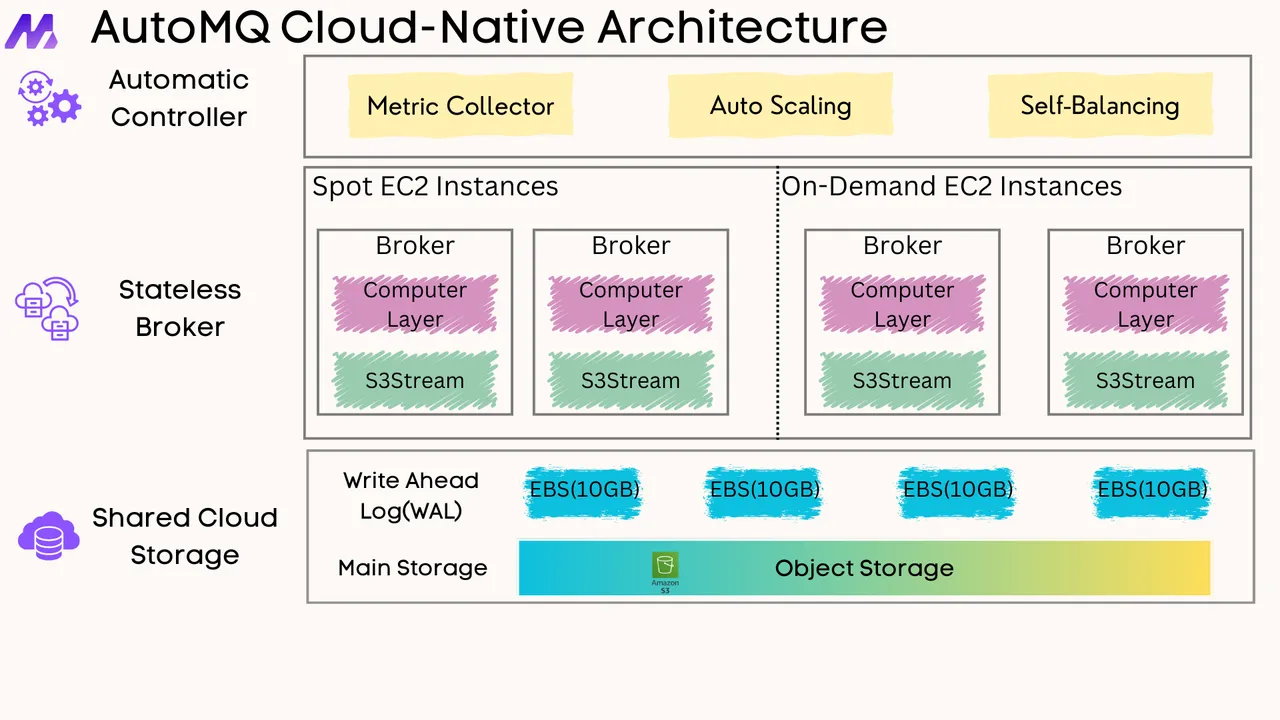





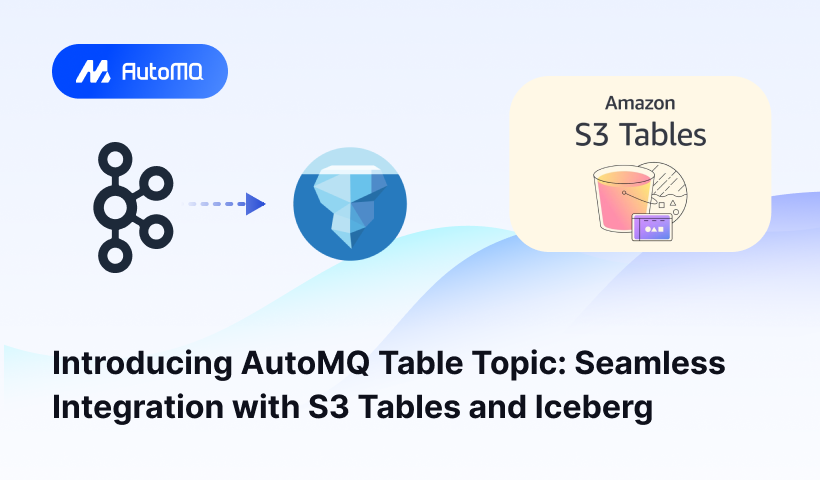
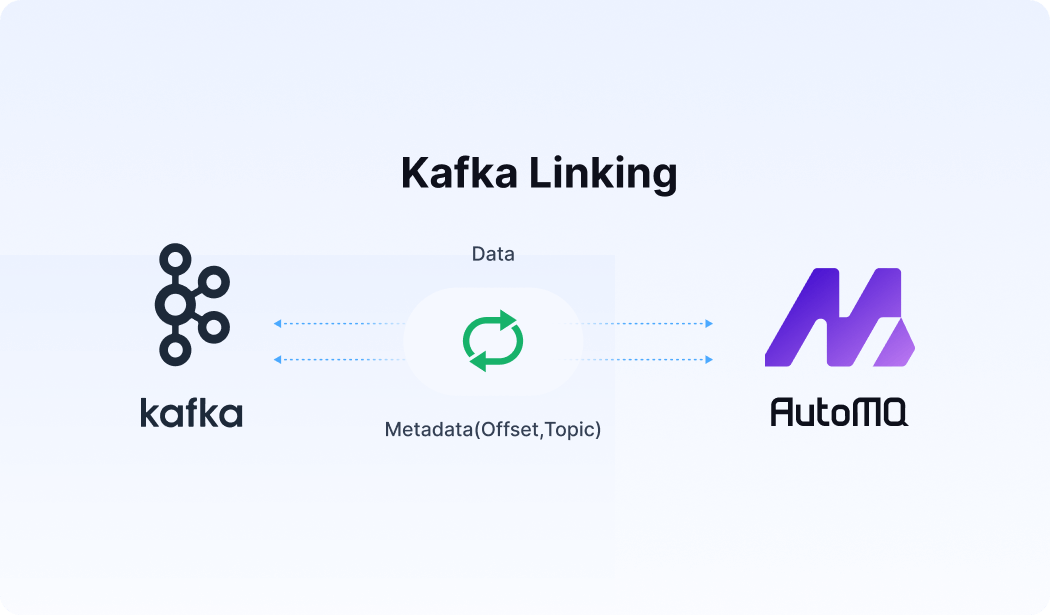




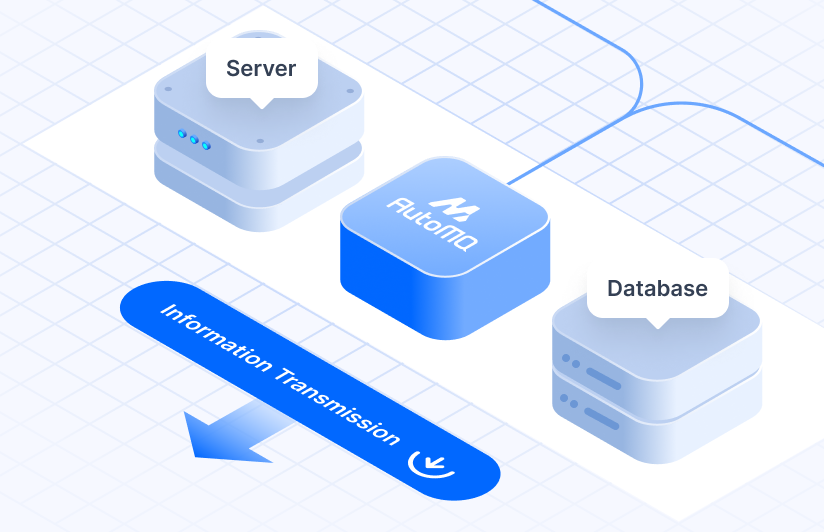



.png)
